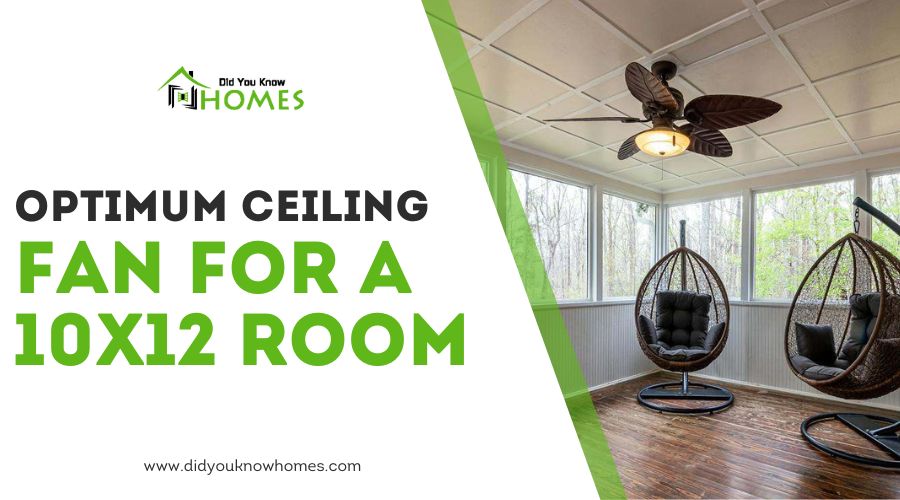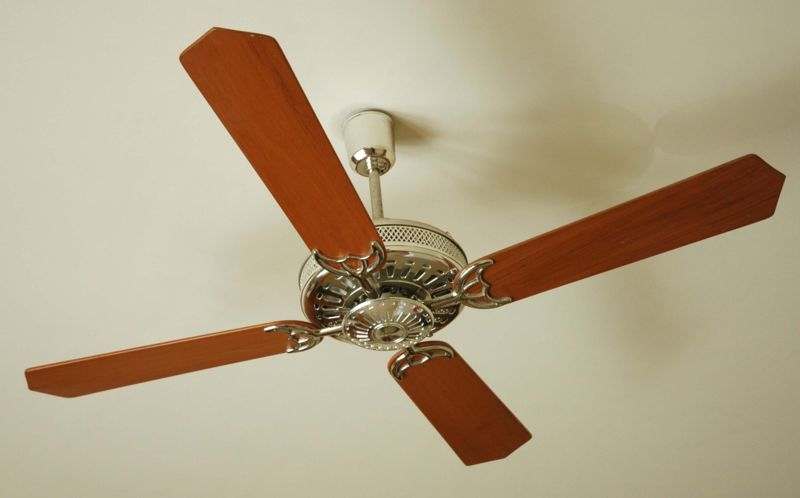Choosing the right ceiling fan for a 10×12 room can make a significant difference in comfort, energy efficiency, and the overall aesthetic of the space. With numerous options available in the market, finding the optimum ceiling fan that matches the size, style, and cooling requirements of a small to medium-sized room requires careful consideration. This article aims to guide you through the essential factors to consider when selecting a ceiling fan for a room of this size, ensuring you make an informed decision that enhances both the functionality and appeal of your space.
The Benefits of Using a Ceiling Fan
Ceiling fans are a popular addition to many homes, offering a range of benefits that extend beyond simple air circulation. Here are some of the key advantages of installing a ceiling fan:
- Energy Efficiency: Ceiling fans are known for their ability to efficiently circulate air within a room, which can help reduce the reliance on heating and cooling systems. By evenly distributing air, they can make a room feel cooler in the summer and warmer in the winter, leading to significant savings on energy bills.
- Comfort: The gentle breeze created by a ceiling fan can make a room feel more comfortable, especially in warmer climates. This airflow can help to reduce the perceived temperature, making it feel several degrees cooler than the actual room temperature.
- Versatility: Modern ceiling fans come in a wide range of designs, sizes, and styles, making them a versatile choice for any room decor. Many models also include features such as built-in lighting, variable speed settings, and remote controls, adding functionality and convenience.
- Improved Air Quality: By circulating air, ceiling fans can help to improve indoor air quality. They can prevent the buildup of stagnant air and distribute fresh air more effectively throughout the room, which is particularly beneficial in rooms with limited ventilation.
- Cost-Effective: Compared to air conditioning units, ceiling fans are relatively inexpensive to purchase and install. Additionally, their low energy consumption makes them a cost-effective option for maintaining comfort in your home year-round.
- Decorative Appeal: Beyond their practical benefits, ceiling fans can also serve as a focal point in a room’s design. With options ranging from sleek and modern to classic and ornate, a ceiling fan can enhance the aesthetic appeal of a space.
Incorporating a ceiling fan into a room is a smart way to achieve comfort, style, and energy efficiency. With the array of benefits they offer, ceiling fans are a worthwhile investment for any homeowner looking to improve their living environment.
Tips for Selecting an Optimum Ceiling Fan
When selecting an optimum ceiling fan for a 10×12 room, there are several factors to consider to ensure you choose a model that effectively meets your needs. Here are some tips to help you make the best choice:
- Size Matters: For a room of this size, a ceiling fan with a blade span of between 44 and 48 inches is ideal. This size ensures efficient air circulation throughout the room without overwhelming the space.
- Consider the Ceiling Height: The height of your ceiling determines the type of ceiling fan you should choose. For standard ceilings (about 8 feet high), a flush-mount fan works best to maintain optimal clearance. Rooms with higher ceilings may require fans that come with downrods, allowing the fan to hang lower and improve air circulation.
- Look for Energy Efficiency: With energy costs on the rise, selecting an energy-efficient ceiling fan can lead to significant savings. Look for fans with energy-saving features such as LED lighting, DC motors, and ENERGY STAR ratings.
- Style and Aesthetics: Ceiling fans come in a wide range of designs and finishes. Choose one that complements your room’s decor to add to the aesthetic appeal. Whether your style is modern, traditional, or somewhere in between, there’s a ceiling fan to match.
- Lighting Options: Consider whether you want your ceiling fan to double as a light source. Many models come with integrated lighting kits. Decide if you prefer a fan with built-in lights or if you’d rather keep the two functions separate.
- Check for Control Options: Modern ceiling fans offer various control options, from traditional pull chains to remote controls and even smart home integration. Consider which control method is most convenient for your lifestyle.
- Review the Warranty: A good warranty can offer peace of mind, so check what kind of coverage is provided. A longer warranty period often indicates the manufacturer’s confidence in the product’s durability.
By keeping these tips in mind, you can choose an optimum ceiling fan that not only enhances comfort and style but also fits perfectly within the dimensions of a 10×12 room.
Ways to Operate a Ceiling Fan
There are three common ways to operate a ceiling fan: using a remote control, a pull chain, or a wall switch. Each method offers unique benefits to accommodate different preferences and room setups.
Remote Control
The convenience of a remote control allows you to adjust your ceiling fan’s speed and lighting from anywhere in the room without having to get up. This feature is especially beneficial in bedrooms or living areas where ease of use contributes to a relaxed environment. Modern remotes can also include functions such as timers and reversible fan direction, adding further convenience and energy efficiency to your ceiling fan’s operation.
Pull Chain
Operating a ceiling fan with a pull chain offers a straightforward and reliable method. Pull chains typically control the fan’s speed with a simple tug, making it easy to adjust without needing any additional tools or devices. This method is often found in older models or in installations where minimalism or cost-effectiveness is preferred. While not as convenient as a remote control, pull chains eliminate the need for batteries or electrical modifications for a wall switch.
Wall Switch
A wall switch integrates the ceiling fan’s operation into your room’s overall electrical system, providing a seamless and permanent solution. Wall switches can be simple on-off toggles or more advanced, offering variable speed controls and separate switches for the fan and any attached lighting. This method is ideal for ensuring that the fan can be easily operated upon entering or leaving the room. Wall switches require proper electrical installation but offer a high level of integration and convenience for daily use.
Conclusion
Whether you prioritize energy savings, ease of operation, or the perfect match to your room’s decor, the right ceiling fan can significantly improve your living environment. Remember, the goal is to choose a fan that not only looks great but also provides effective air circulation, ensuring your room remains comfortable throughout the year.




